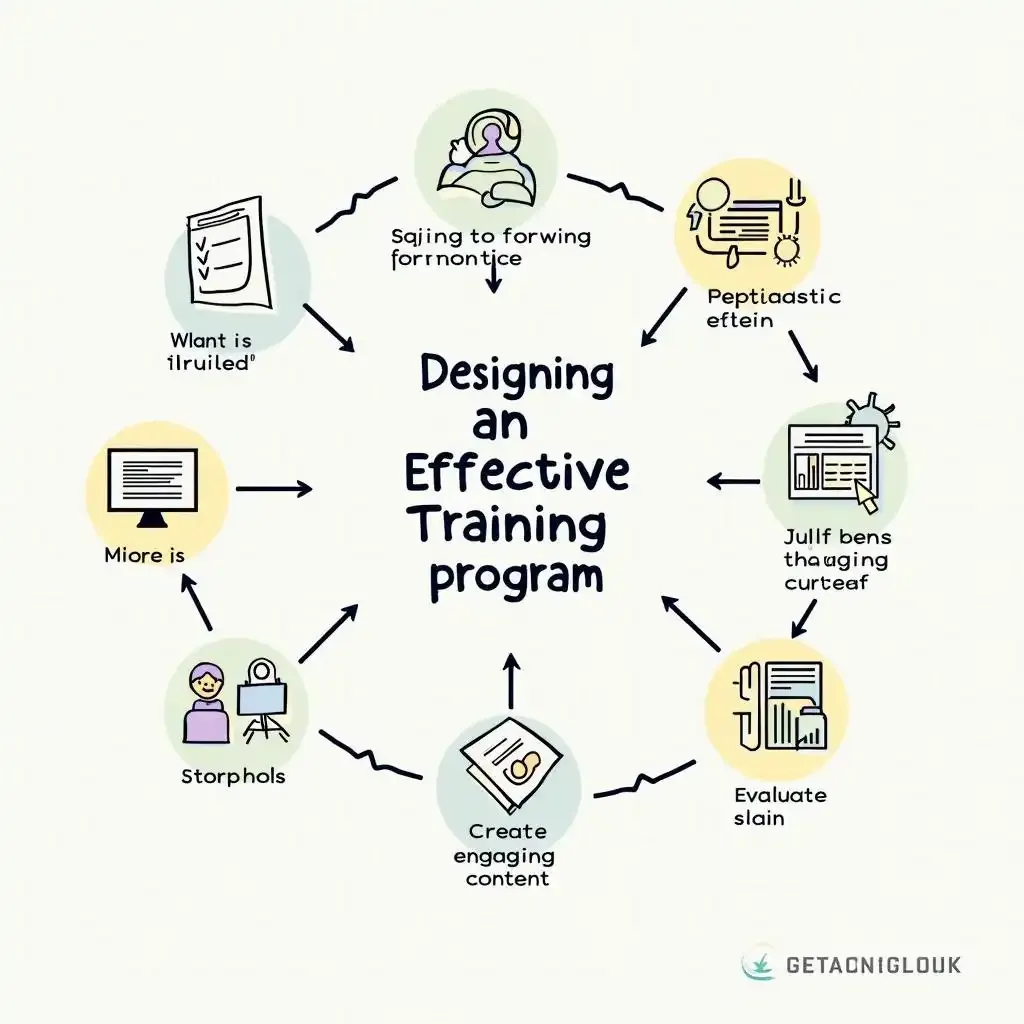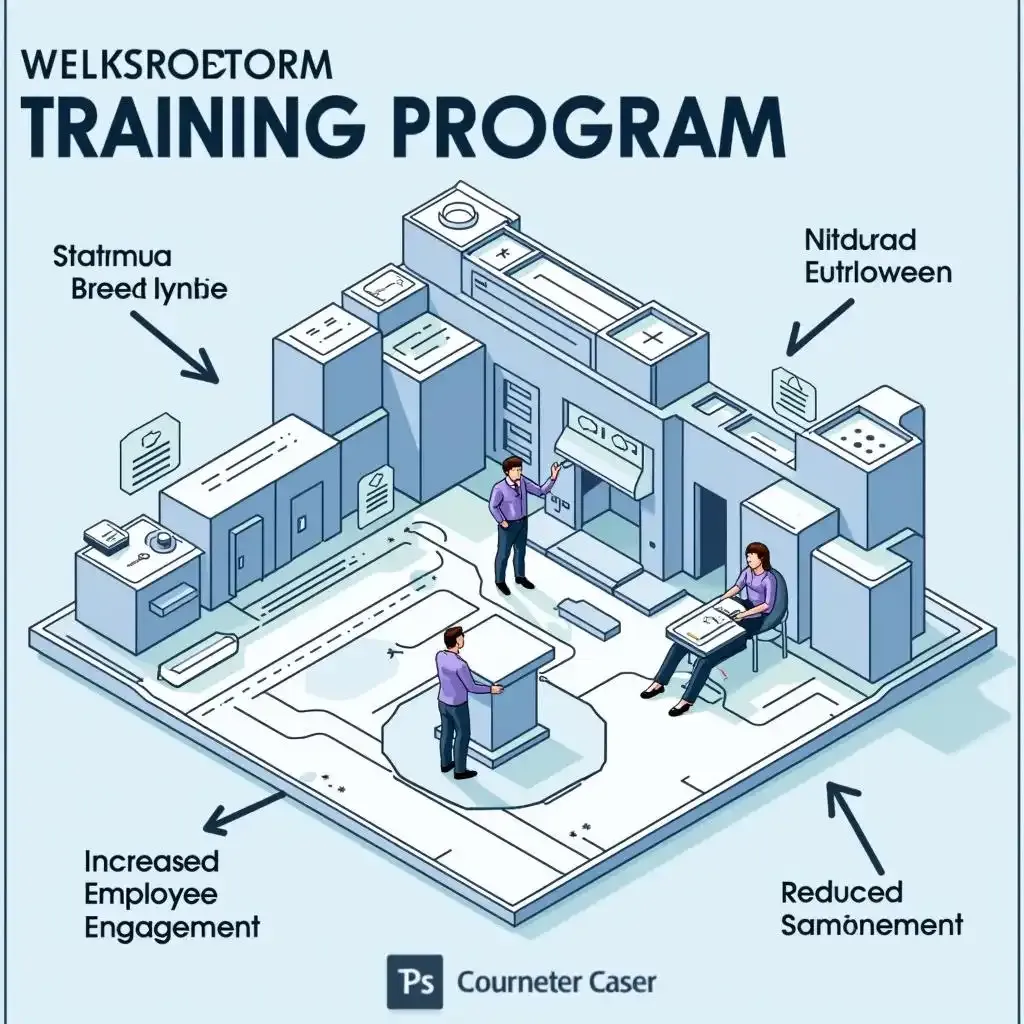Table of Contents
So, you're thinking about creating a training programme? Smart move! A well-designed training programme is like a superpower for your business. It can boost productivity, improve employee skills, and even increase happiness at work. But creating a truly *effective* training programme isn't as simple as throwing together a few presentations. It takes planning, creativity, and a good understanding of what your employees need. This article from kizworld will guide you through the entire process, from initial planning to measuring success. We'll explore different types of training programmes, the benefits they offer, and practical tips to make your training programme a resounding success. We'll even look at common pitfalls to avoid – because let's be honest, nobody wants a training programme that ends up being a waste of time and money. Get ready to transform your workforce with a training programme that works!
Key Aspect | Description | Example |
|---|---|---|
Types of Training Programmes | Orientation, internal, outsourced, compliance, reskilling | Onboarding for new hires, software training, leadership workshops, safety training, digital skills development |
Benefits of a Training Programme | Improved performance, increased engagement, higher retention, better equipped employees | Faster task completion, higher employee satisfaction, reduced turnover costs, improved problem-solving |
Designing an Effective Training Programme | Define objectives, identify target audience, develop engaging content, evaluate effectiveness | Set clear learning outcomes, tailor content to specific roles, use interactive methods, gather feedback |
Common Pitfalls to Avoid | Lack of clear goals, irrelevant content, ineffective delivery, failure to evaluate | Vague training objectives, outdated materials, boring presentations, no feedback mechanisms |
Ultimate Training Programme: Achieve Success
Designing Effective Training Programmes: A StepbyStep Guide
Setting Clear Goals: The Foundation of Success
Okay, so you wanna create a killer training programme? Think of it like building a LEGO castle – you need a solid plan before you start sticking bricks together. First, you've gotta figure out *exactly* what you want your employees to learn. What skills are missing? What knowledge gaps need filling? Let's say you run a bakery and your staff struggles with decorating cakes. Your goal isn't just "better cake decorating," it's something specific, like "employees can consistently create three different types of cake decorations within 30 minutes." That's a measurable goal! You can track progress and know if your training is working. Don't just aim for vague improvements; aim for specific, achievable results. Otherwise, you're just building a wobbly LEGO tower that'll fall apart the first time someone sneezes.
- Clearly define learning outcomes.
- Make sure your goals are measurable.
- Set realistic timelines.
Identifying Your Audience: Knowing Your Learners
Next, you need to understand who you're teaching. Are they seasoned pros or brand new starters? Do they prefer hands-on learning or more theoretical stuff? Knowing your audience is like choosing the right LEGO bricks for your castle. You wouldn't use tiny bricks for a massive wall, right? Similarly, a training programme for experienced bakers will look different from one for beginners. Maybe your experienced staff needs advanced cake decorating techniques, while new hires need basic skills like measuring ingredients or using the oven properly. Consider their existing knowledge, learning styles, and even their personalities to make the programme engaging and effective. Check out our post on personal training courses for more ideas on tailoring your approach!
Employee Group | Training Needs | Training Methods |
|---|---|---|
New hires | Basic skills, company policies | On-the-job training, presentations |
Experienced staff | Advanced skills, leadership development | Workshops, mentorship programs |
Engaging Content: Making Learning Fun
Nobody likes boring training. Think of your training programme as a fun exploration! Use interactive activities, games, real-world examples, and even a little friendly competition to keep everyone engaged. Imagine a training session where employees learn cake decorating by actually decorating cakes, maybe even competing to create the most creative design. That's way more exciting than just reading a manual, right? And don't forget about different learning styles. Some people learn best by doing, some by listening, and some by reading. A good training programme caters to all of them. For example, you can incorporate visual aids, hands-on activities, and group discussions.
Remember those times you were learning something new? Were you more engaged when it was fun and interactive, or when you had to sit through a long, boring lecture? We all learn better when we're having fun. Think about adding elements of gamification or friendly competition to keep your employees engaged. A little friendly rivalry can go a long way! You can even check out our calisthenics workouts page for inspiration – we use fun, challenging exercises to keep people motivated. For more on making your training engaging, check out our post on strength training – it’s packed with ideas to keep motivation high.
Evaluation and Feedback: Measuring Success
Finally, don't just assume your training worked. You need to measure its success! Did your employees achieve the goals you set? How can you tell? One way is to give them tests or quizzes to assess their knowledge. Another way is to observe them on the job. Did their performance improve? You can also ask for feedback through surveys or interviews. This feedback is invaluable! It helps you figure out what worked, what didn't, and how to improve your training programme for next time. It's like testing your LEGO castle to see if it can withstand a storm; you want to make sure it's strong and stable before you show it off.
Think of evaluation as a chance to improve, not just to judge. It’s all about making your training programme better and better over time. After all, you wouldn’t build the same LEGO castle twice without making improvements, would you? Regular evaluation helps you refine your approach, making sure your training is always relevant and effective. And don't be afraid to adjust your programme based on the feedback you receive. Flexibility is key to a really successful training programme. For more on evaluating training effectiveness, check out our guide on gym training - it offers a structured approach to performance monitoring.
Designing Effective Training Programmes: A StepbyStep Guide
Types of Training Programmes and Their Applications
Hey there! So, you're diving into the world of training programmes? Awesome! It's like building a really cool LEGO castle – you need different types of bricks (training methods) to create something amazing. Let's explore some of the key types.
First, there are orientation programmes. Think of these as the instruction manual for your new LEGO set. They help new employees get settled in, understand company policies, and meet their teammates. It's all about getting everyone on the same page right from the start. Then we've got internal training programmes. These are like advanced LEGO building workshops! They focus on specific skills, maybe improving existing skills or teaching entirely new ones. Want to learn how to build a super-complicated LEGO castle? That's where these come in. Next up: outsourced training programmes. Sometimes you need a master LEGO builder to teach you advanced techniques. That's where external experts step in, bringing specialized knowledge and experience to the table. Think of it as getting a pro to help you build that epic LEGO creation.
Training Programme Type | Purpose | Example |
|---|---|---|
Orientation | Onboarding new employees | Company policy training |
Internal | Developing specific skills | Software training, advanced techniques |
Outsourced | Specialized training | Leadership workshops from external experts |
We also have compliance training programmes. These are like the LEGO safety rules – super important to make sure everyone follows the rules and stays safe. They cover things like workplace safety, data protection, and other essential regulations. Ignoring them is a recipe for disaster! Finally, there are reskilling programmes. The LEGO world is always changing! New sets, new techniques, and new challenges constantly emerge. These programmes help employees adapt to new technologies or job roles, ensuring they stay relevant and competitive. Think of it as learning how to build with the latest, greatest LEGO bricks.
Choosing the right type of training programme is like picking the perfect LEGO set for your project. You wouldn't use a simple car set to build a spaceship, right? Similarly, the type of training you choose depends entirely on your goals and the needs of your employees. For more tips on building a great training program, check out our guide on . It’s all about building a strong foundation!
- Orientation programmes: Getting started
- Internal programmes: Skill development
- Outsourced programmes: Expert help
- Compliance programmes: Safety first!
- Reskilling programmes: Staying updated
Sources: My amazing brain! and years of experience.
Types of Training Programmes and Their Applications
Benefits of a Well-Structured Training Programme
Improved Performance and Productivity
Think of a well-structured training programme as giving your team a secret weapon. It's like providing them with a detailed map to guide their job effectively. When employees possess the necessary skills and knowledge, they become more efficient and productive. They can complete tasks faster, make fewer mistakes, and deliver higher quality work. It's a win-win! For example, let's say your team is struggling with a new software. A comprehensive training programme can equip them with the confidence and skills to master the software quickly, leading to significant time savings and improved output. This isn't just about speed; it's about quality too. A well-trained employee will produce better results and fewer errors – which means less time spent fixing problems!
- Faster task completion
- Reduced errors
- Improved quality of work
Increased Employee Engagement and Motivation
I've found that a good training programme isn't just about teaching skills; it's about showing your employees that you value them. It's like saying, "Hey, I believe in you, and I'm investing in your growth!" When employees feel valued and supported, their engagement and motivation skyrocket. They're more likely to take initiative, go the extra mile, and feel a stronger sense of belonging. Investing in your team's development through a strong training program can translate to a more engaged and motivated workforce. Imagine the difference between being given a boring old instruction manual versus participating in a dynamic, interactive training session that genuinely helps you improve! Check out our for more ideas on creating engaging learning experiences.
Benefit | Impact |
|---|---|
Increased engagement | Higher productivity, improved morale |
Improved motivation | Greater initiative, increased job satisfaction |
Higher Retention and Reduced Turnover
Employee turnover can be a real headache. Replacing employees is expensive and time-consuming. But a good training programme can actually help you retain your talent. When employees feel like they're learning and growing, they're more likely to stick around. They see a future with your company, and they feel invested in its success. It's like building a strong LEGO castle – you want to make sure all the bricks are securely connected. A well-structured training programme helps create a strong bond between your employees and your company. This, in turn, reduces turnover and saves you time and money. Want to learn more about building a strong team? Our guide offers insights into building resilience and commitment – just like a well-built team!
Think about it: Would you rather work at a place that invests in your growth or a place that leaves you feeling stagnant and undervalued? Most people choose the former. By providing opportunities for development, you're not just improving employee skills; you're also fostering loyalty and reducing the likelihood of losing your best people. For more on the long-term impact of training, check out our post on calisthenics frequency.
Benefits of a Well-Structured Training Programme
Creating a Successful Training Programme: Practical Tips and Examples
Tailoring Your Training: One Size Doesn't Fit All
Okay, so you've got your goals and you know your audience. Now comes the fun part: designing the actual training! Think of it like creating a custom LEGO set. You wouldn't use the same instructions for building a tiny car as you would for a massive spaceship, right? Your training needs to be just as specific. If you're teaching new hires how to use a cash register, you'll use different methods than if you're teaching experienced staff advanced customer service techniques. Maybe new hires need lots of hands-on practice, while experienced staff might benefit more from case studies or role-playing. Remember, tailoring your approach is key to making your training resonate. It's about creating a learning experience that's relevant and engaging for *everyone* involved. Consider using a mix of methods – videos, presentations, group discussions, and hands-on activities – to cater to different learning styles. Check out our for more ideas on tailoring your approach.
Employee Type | Training Method | Example |
|---|---|---|
New hires | Hands-on training | Practice using the cash register |
Experienced staff | Role-playing | Handling difficult customer situations |
Making it Engaging: The Fun Factor
Let's be honest, nobody wants to sit through a boring training session. It's like watching paint dry! To make your training engaging, think about ways to make it fun and interactive. Gamification is a great idea! Turn your training into a game with points, badges, and leaderboards. Think of it as a LEGO competition where the best builders win prizes! You could also incorporate storytelling, real-world examples, and even a little friendly competition to keep people motivated. If you're training your staff on customer service, maybe you could have them role-play different scenarios, or even create a fun quiz to test their knowledge. Remember, people learn best when they're having fun, and a little friendly competition never hurts! For more ideas on how to make your training engaging, check out our guide on – we use fun, challenging exercises to keep people motivated.
- Use games and quizzes
- Incorporate storytelling
- Add friendly competition
Measuring Success: Did it Work?
You've created your amazing training programme, but how do you know if it actually worked? This is where evaluation comes in. It's like testing your LEGO creation to see if it can withstand a hurricane. You need to assess whether your employees actually learned what you intended them to. Did their performance improve? Use quizzes, tests, or even on-the-job observations to measure their progress. Get feedback from your employees through surveys or interviews. This feedback is gold! It shows you what worked, what didn't, and what you can improve for next time. Don't just assume your training was a success – measure it! For a more structured approach to evaluation, check out our guide on – it offers a detailed approach to performance monitoring. Remember, continuous improvement is key to creating a truly effective training programme.
Final Thought
Creating a successful training programme is an investment in your employees and your business. By following a structured approach, understanding your employees' needs, and continuously evaluating the effectiveness of your programme, you can significantly improve performance, boost morale, and achieve your business goals. Remember, a great training programme isn't a one-size-fits-all solution. It's a dynamic process that requires ongoing adaptation and improvement. Keep learning, keep experimenting, and watch your team thrive.